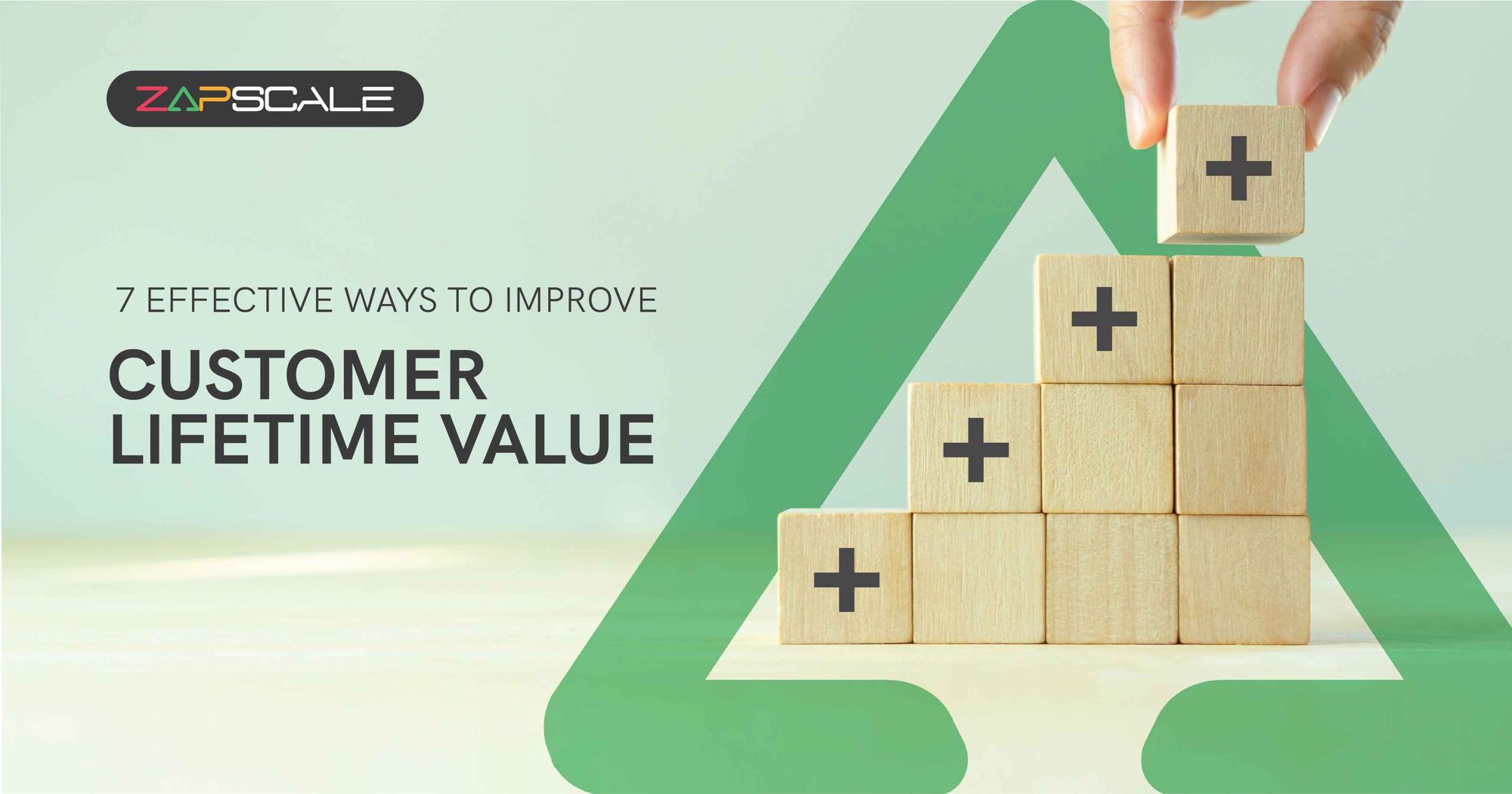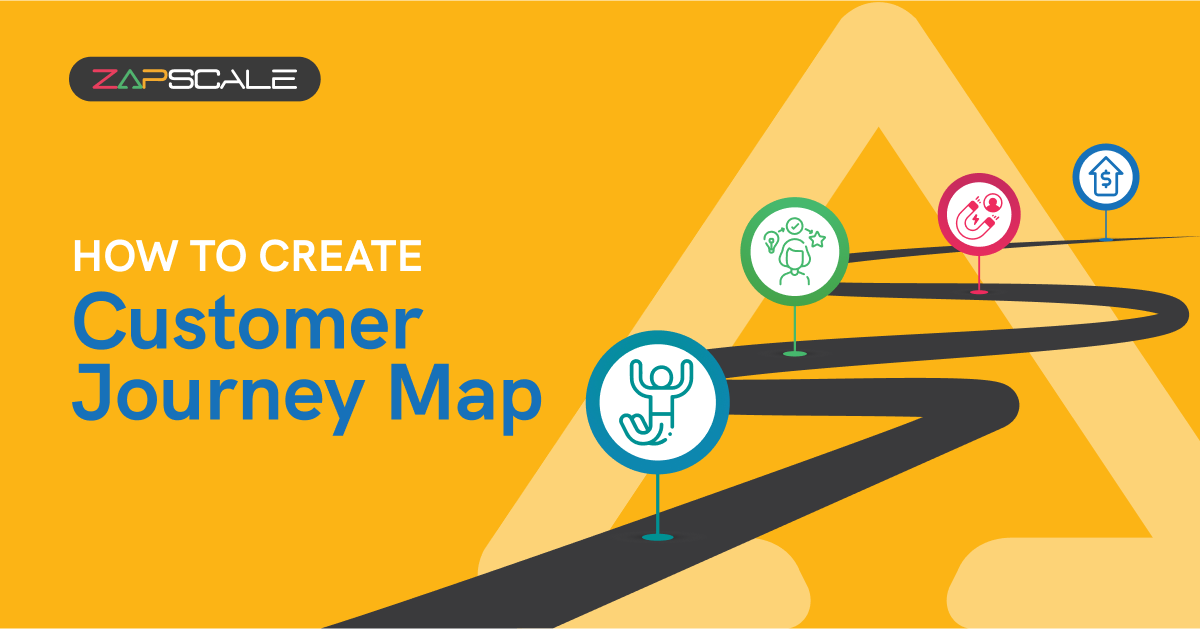CATEGORY > Customer Journey
7 Effective Ways To Improve Customer Lifetime Value

In the world of SaaS, customer acquisition is just the first step toward building a successful enterprise. The key to long-term success lies in building customer loyalty and increasing customer lifetime value (CLV).
What is Customer Lifetime Value?
Customer Lifetime Value is a metric that measures the total value a customer brings to a business over their entire lifespan as a customer.
Improving CLV can have a significant impact on a company's bottom line, as it means customers are more likely to stay with the company and continue to purchase its products or services.
To improve customer lifetime value, businesses can focus on several key areas:
- Enhancing the customer experience through personalized interactions and exceptional service fosters loyalty and increases repeat purchases, thus increasing CLV.
- Implementing loyalty programs incentivizes customers to remain engaged with the brand, driving higher CLV through increased purchase frequency and average order value.
- Upselling and cross-selling expansion strategies capitalize on existing customer relationships by offering complementary products and premium upgrades, maximizing CLV per customer.
- Improving retention rates through targeted retention strategies and proactive customer support extends the customer lifecycle, further enhancing CLV.
- By prioritizing initiatives that enhance customer satisfaction, engagement, and loyalty, SaaS businesses can effectively increase customer lifetime value, driving long-term profitability and sustainable growth.
Whether you're a small business owner or a seasoned entrepreneur, these tips will help you optimize your customer relationships and maximize their value to your business.
There are various ways to calculate the LTV formula, here is a simple way to do it:
Check out this link for a deeper dive into the LTV formula.
There are two proven and time-tested strategies that you can implement to boost your business growth.
Why Is CLV Important To Your Business Growth?
Customer lifetime value is a crucial metric to drive sustainable business growth and understanding the long-term value of customer relationships.
Here’s why CLV is essential:
1. Strategic Decision Making
CLV offers insights into the profitability of different customer segments, enabling businesses to allocate resources effectively and prioritize efforts toward acquiring and retaining high-value customers.
2. Revenue Maximization
Understanding CLV helps identify opportunities for increasing customer value through targeted upselling, cross-selling, and retention strategies, ultimately driving revenue growth and maximizing profitability.
3. Customer-Centric approach
Focusing on maximizing CLV means prioritizing exceptional customer experience and building long-term customer relationships, which fosters customer loyalty and advocacy which are the key drivers of sustainable growth.
4. Competitive Advantage
Businesses that leverage CLV can tailor their marketing, sales, and customer service efforts to deliver personalized and relevant experiences, gaining a competitive edge in the marketplace.
5. Forecasting And Planning
CLV serves as a predictive metric for forecasting future revenue streams and planning business initiatives, allowing for informed decisions about investment in product developments, marketing campaigns, and customer acquisition strategies.
7 Ways To Improve Your Customer Lifetime Value
The foundation of improving customer lifetime value is to make your customers stay and return to buy. You must continually demonstrate to them how much value they are deriving from your service or product to keep them satisfied and content with it.
Satisfaction + Value = Retention & Expansion
1. Delightful Onboarding
Since onboarding marks the start of the brand-customer relationship, it's crucial to establish a process that is seamless and makes the consumer delighted to activate your product. Remember that the onboarding should be brief and quick but effective.
2. Consistent Customer Training
To ensure that your customer is extracting maximum value from your product you need to focus on getting them trained on low-usage features and also on the new features that you introduce. For this, you need to monitor the usage patterns of your customer. Here is a tool to help you get the ball rolling.
3. Constant Product Updates
There are 2 primary hooks that competitors use against each other:
1) Price
2) Product Features
You must maintain a careful watch on your customers' changing wants in the present SaaS landscape. Taking feedback and acting upon them is critical. You must enhance your product in light of your insights if you want to consistently provide value to your customers.
4. Offer Lucrative Pricing
As previously stated, price is a crucial aspect of customer retention. To maintain their interest and loyalty, it is necessary to provide enticing offers. A recommended strategy is to enhance the annual plan, which can encourage customers to make long-term commitments.
5. Create a Community
While it is true that a customer is initially drawn to your business because of its product offerings, establishing a strong relationship with them can further solidify their loyalty. To enhance this connection, consider creating a community for your customers to become more engaged and connected with your brand as a whole. By doing so, you can foster a sense of belonging and encourage their ongoing participation.
6. Apply an expansion revenue plan
To maximize revenue, it is important to not only focus on customer retention but also to increase their commitment to your product. To achieve this, it is crucial to develop a personalized plan for each customer that assesses their potential for revenue expansion. This strategy can help you identify and target areas for growth while strengthening the customer's commitment to your brand.
7. Collect Customer Feedback
In addition to selling your product, it is important to evaluate customer satisfaction. Gathering feedback can be achieved through various methods such as implementing automated NPS or CSAT surveys. However, it is equally important to take action based on the results of these surveys to address any concerns and improve the overall customer experience.
Conclusion
And, that’s a wrap!
CLV should not be regarded as a short-term or one-time endeavor, but rather a continuous effort to achieve long-term results. Businesses must prioritize the success of their customers and cultivate a customer-first mindset, regardless of the company's size or stage of development. Remember, enhancing Customer Lifetime Value is not a tactical maneuver, but rather a strategic approach.
FAQs
How Can I Improve Customer Lifetime Value?
To improve CLV, focus on enhancing customer experience, implementing loyalty programs, upselling and cross-selling, improving retention rates, and targeting marketing efforts effectively. These strategies increase customer satisfaction, engagement, and loyalty, leading to higher CLV.
How Is CLV Calculated?
CLV is calculated by subtracting the cost of acquiring and serving a customer from the total revenue generated by that customer over their lifetime. The formula may include factors like average purchase value, purchase frequency, retention rate, and profit margin.
How Does Improving CLV Benefit My Business?
Improving CLV leads to higher revenue, increased customer loyalty, and better customer retention. It also helps businesses identify high-value customer segments, optimize marketing efforts, and make strategic investments in product development and customer service.
What Are Some Ways To Improve CLV?
Some ways to improve CLV include providing personalized customer experiences, offering loyalty programs, upselling and cross-selling, improving customer support, and reducing churn through proactive retention strategies.
How Can I Use CLV To Improve My Business
By analyzing CLV, businesses can identify the most profitable customer segment, tailor marketing and sales strategies to these segments, and focus on retaining high-value customers. This approach helps in making data-driven decisions that enhance overall business performance.
Some ways to improve CLV include providing personalized customer experiences, offering loyalty programs, upselling and cross-selling, improving customer support, and reducing churn through proactive retention strategies.
ABOUT THE AUTHOR
Popular from Customer Journey
Quality Content,
Straight To Your Inbox!
Subscribe for the latest blogs, podcasts, webinars, and events!

Write a Blog
If you have experience in CS and
a flair for writing, we’d love to
feature you.
Write to us on
hello@zapscale.com






